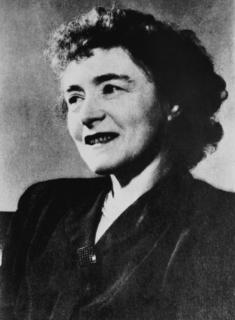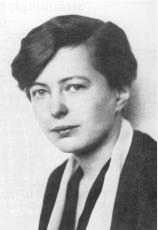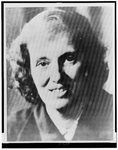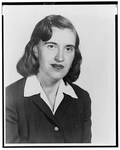by Liz Olson
The Nobel Prize for Science has been awarded since 1901 to people who have made outstanding achievements in physics, chemistry, physiology, or medicine. Marie Curie was the first women to win the Nobel Prize for Science, in 1903. Follow the slideshow to learn more about the women whose research has had a profound effect on the advancement of science and earned them the honor of Nobel Laureate.
- Marie Sklodowska Curie

- Nobel Prize in Physics, 1903 and Chemistry, 1911
- Marie Curie is considered the most famous of all women scientists. She was the only woman ever to win two Nobel Prizes. Prohibited from higher education in her native Poland (then controlled by Russia), she moved to Paris in 1891 and studied at the Sorbonne. In 1903 her discovery of radioactivity earned her the Nobel Prize in physics. In 1911, she won it for chemistry.
- Irene Curie
![Irene Curie]()
- Nobel Prize in Chemistry, 1935
- Irene Curie was the daughter of Marie Curie. She furthered her mother's work in radioactivity and won the Nobel Prize for discovering that radioactivity could be artificially produced.
- Gerty Radnitz Cori
![Gerty Radnitz Cori]()
- Nobel Prize in Physiology or Medicine, 1947
- Gerty Cori studied enzymes and hormones, and her work brought researchers closer to understanding diabetes. She won the Nobel Prize for discovering the enzymes that convert glycogen into sugar and back again to glycogen.
- Photo source: D.H.H.S.
- Barbara McClintock
![Barbara McClintock]()
- Nobel Prize in Physiology or Medicine, 1983
- Barbara McClintock studied the chromosomes in corn (maize) and her work uncovered antibiotic-resistant bacteria and a possible cure for African sleeping sickness.
- Maria Goeppert Mayer
![Maria Goeppert Mayer]()
- Nobel Prize in Physics, 1963
- Maria Goeppert Mayer researched the structure of atomic nuclei. During World War II she worked on isotope separation for the atomic bomb project.
- Rita Levi-Montalicini
![Rita Levi-Montalicini]()
- Nobel Prize in Physiology or Medicine, 1986
- An Italian neuroembryologist, Rita is known for her co-discovery in 1954 of nerve growth factor, a previously unknown protein that stimulates the growth of nerve cells and plays a role in degenerative diseases like Alzheimer's disease.
- Photo source: National Library of Medicine
- Dorothy Crowfoot Hodgkin
![Dorothy Crowfoot Hodgkin]()
- Nobel Prize in Chemistry, 1964
- Dorothy discovered the structures of penicillin and vitamin B(12). She won the Nobel Prize for determining the structure of biochemical compounds essential to combating pernicious anemia.
- Photo source: Library of Congress
- Rosalyn Sussman Yalow
![Rosalyn Sussman Yalow]()
- Nobel Prize in Physiology or Medicine, 1977
- Rosayln Yalow won the Nobel Prize for developing radioimmunoassay, a test of body tissues that uses radioactive isotopes to measure the concentrations of hormones, viruses, vitamins, enzymes, and drugs.
- Photo source: Library of Congress
- Christiane Nüsslein-Volhard
![Christiane Nüsslein-Volhard]()
- Nobel Prize in Physiology or Medicine, 1995
- Christiane Nüsslein-Volhard won the Nobel Prize using the fruit fly to help explain birth defects in humans.
- Photo source: Rama
- Linda Buck
![Linda Buck]()
- Nobel Prize in Physiology or Medicine, 2004
- Buck and fellow American Richard Axel discovered how the olfactory system—the sense of smell—works and how people are able to recognize and remember more than 10,000 odors.
- Photo source: Roland Morgan










